Proprioception
In the dark, have you ever moved around your home without running into any furniture? Or did you gaze at your hands while typing on your keyboard? Proprioception is the mechanism that enables these everyday actions.
Proprioception: What is it?
Your body’s capacity to sense its position, motion, and placement in space without looking is known as proprioception. It functions similarly to your body’s “sixth sense.” Because of proprioception, you can close your eyes and yet be aware of your arms, legs, and other body parts. You may move more fluidly, maintain your coordination, and complete activities effortlessly with ease and internal awareness.
What Separates Proprioception from Touch or Balance?
Although it’s simple to mistake proprioception for touch or balance, the two are very different: The sense of touch allows you to perceive sensations on your skin, such as pressure, discomfort, heat, and cold.
Your inner ear, or vestibular system, plays a major role in balance, which is your body’s capacity to remain upright and stable. Knowing where your body parts are, how they move, and how much effort you’re exerting even when you’re not seeing or touching anything is known as proprioception.
Examples of Proprioception in Action in Daily Life
You aren’t frequently aware that proprioception is always in action.
Walking in the dark: Your body remembers where your legs and feet are and how to move them, so you can go to the bathroom at night without using the lights.
Typing without looking: Your brain and muscles memorize the location of each key, so you can type on a keyboard or send a text without paying attention to your fingers.Catching a ball: Your body instinctively adapts to the proper position when you catch a ball, so you don’t need to constantly glance at your hands.
Stair climbing: Your body detects the location and motion of your legs and feet, so you don’t have to watch every step.
The Functions of Proprioception
Although proprioception may seem magical, it is a clever bodily mechanism that continuously collects and transmits data to your brain. It makes it possible for you to move easily, stay balanced, and react naturally.
Sensory Receptors’ Function
Proprioception begins in certain sensors found all over your body, particularly in:
- The muscles
- Joints
- Tendons
We refer to these senses as proprioceptors. They function as microscopic messengers that monitor:
- The amount that a muscle can stretch
- How quickly your body is moving
- The tension or pressure on your tendons and joints
- Think of them as your body’s GPS devices, constantly updating your brain on the location and activities of everything.
Transmitting Information to the Brain
These proprioceptors communicate with your central nervous system by sending signals through your nerves when they sense movement or changes.
A major factor in coordinating these movements is the cerebellum, a region of the brain located near the rear of the head. It assists in ensuring that your movements are precise and seamless. The sensory cortex is one of the other brain regions that aids in feeling and reacting to bodily motions.
The Brain-Body Loop Simplified
There is movement.
You make physical movements, like raising your arm.
Change is detected via sensors.
Your muscles, joints, and tendons have proprioceptors that detect pressure, angle, or strain.
Information is processed by the brain.
The brain’s cerebellum and other regions examine the information to determine what is happening.
The Brain Returns Instructions
To help you stay balanced or correct your posture, for example, the brain relays information back to you.
The Significance of Proprioception
Your everyday existence is greatly impacted by proprioception. You utilize it every second, whether you’re sprinting, cleaning your teeth, or even standing motionless, even though you might not be aware of it. It functions similarly to your body’s natural navigation system, keeping you balanced, safe, and under control.
Daily Task: Moving Easily and Preventing Injuries
For practically any movement-based task, proprioception is essential. Your body would feel awkward or confused without it. This is how it benefits you daily
Running and walking: You don’t have to glance down to know where your feet are because your brain knows exactly where they are. Making sure you don’t trip or fall is an example of proprioception in action.
Dressing or eating: Putting on clothes or putting a spoon to your mouth doesn’t require you to look at your hands.
Injury prevention: Your body immediately adapts when you tread on uneven terrain by tightening your muscles and stiffening your ankle. Proprioception is responsible for that quick reaction.
Improved Agility and Quicker Reflexes in Sports
In particular, proprioception is crucial for sports and active individuals. It enables them to move swiftly, maintain their balance, and respond rapidly.
Agility: Proprioception enables the body to move quickly and precisely, whether a dancer is spinning flawlessly or a football player avoiding a tackle.
Reflexes: Proprioception enables a tennis player’s body to react quickly and precisely when they swing to return a rapid serve. Coordination is what allows gymnastics to do a flip, swimmers to glide smoothly, and martial artists to perform exact techniques.
Benefits to Mental Health and Cognitive Function
Proprioception affects your mental health in unexpected ways in addition to your physical health.
Grounding and Awareness: Proprioception enables you to feel “present” in your physical form. Because of this, movement-based exercises like yoga, stretching, and walking can help people relax and cope with stress.
Sensory integration: Improving proprioception can provide children and adults with sensory processing issues (such as autism) a greater sense of control over their body and emotions.
Cognitive development: Proprioception is crucial for the growth of motor abilities, attentiveness, and body awareness in developing children.
What Causes Poor Proprioception?
- Ligament, joint, or muscle injuries
- Nervous System Disorders
- Changes Associated with Age
- Long immobilization or Inactivity
- Sensory Processing Disorders
- Medical Conditions and Vitamin Deficiencies
- Brain Damage
Signs and Symptoms of Poor Proprioception
- Uncoordination or clumsiness
- People with poor proprioception may appear uncomfortable. They might:
- Hit with doors or furniture
- Drop objects often.
- Stumble or trip over their own feet
- Poor Balance: Proprioception and balance go hand in hand. It may be a proprioception problem if you have trouble staying stable, particularly while your eyes are closed.
- Having trouble using fine motor skills
Writing, buttoning a shirt, and using utensils all need exact control, which is a requirement for fine motor abilities. When proprioception is weakened, these tasks become more difficult. - Looking at Your Limbs to Move Them
This is a significant hint. Because their brains aren’t receiving enough sensory information, people with poor proprioception frequently rely mostly on their eyes to direct their movements. - Fatigue or Anger When Performing Physical Activities
Constantly focusing on your body may be both mentally and physically exhausting.It takes a lot more work to complete tasks that should feel automatic. - Avoiding or craving sensory input, particularly in children
The body may be attempting to obtain more precise proprioceptive signals when certain people seek out intense pressure, such as through hugs, leaping, or colliding with objects. - Ineffective Posture or “Floppy” Motions
Individuals who struggle with proprioception may have: - slouched position
- Uncoordinated, loose limbs
- Having trouble staying still or sitting up straight without assistance
Comparing Proprioception to Other Senses
Proprioception, also referred to as the “sixth sense,” facilitates movement, balance, and a sense of connection to the environment by collaborating with your other senses. Let’s examine how it differs from touch, balance, and vision, and how the brain combines these senses to create complete bodily awareness.
Compare Proprioception with Touch
The sense of touch allows you to experience sensations such as pressure, warmth, and discomfort on the outside of your body.
Deeper, proprioception allows you to feel the location and motion of your bodily parts without having to look at or touch anything.
Proprioception vs Vestibular System Balance
Motion, head position, and balance are all sensed by your inner ear’s vestibular system.
Proprioception uses your muscles and joints, not your inner ear, to perceive where you are and how you move.
Comparing Proprioception and Vision
You can see your surroundings and the location of your body in space thanks to vision.
Proprioception helps you locate your body parts, even when you’re tired or in the dark.
The Brain’s Combination of These Senses
Information from your senses is continuously sent into the brain, which functions similarly to a supercomputer. All of this information is used to provide you with precise, well-coordinated movement.
This is how it functions:
- The skin gives input by touch.
- Vision helps you to see your environment and your own motions.
- Your vestibular system assists you in remaining centered and balanced.
- Proprioception keeps track of how your muscles and joints move and arrange themselves.
- All of these messages are sent to the cerebellum, sensory cortex, and other brain structures. Together, these brain regions can:
- Modify your posture.
- Sync your muscles.
- keep you safe, focused, and in balance.
Injury and Proprioception
Proprioception, which works like internal GPS, controls movements. However, that GPS may be interfered with when you are injured, particularly in the joints, muscles, or neurological system. Movement becomes uncomfortable, shaky, or even dangerous as a result.
Proper recovery and injury prevention depend on an understanding of the relationship between proprioception and damage.
The Impact of Injury on Proprioception
The proprioceptors, tiny sensory receptors in joints, muscles, tendons, and nerves, may be damaged or lose their function when you injure them. As a result, your brain receives less accurate information about the locations of your bodily parts, which may cause:
- Inadequate coordination
- Unbalanced
- Slower reaction times
- An increased chance of re-injury
Examples of Injuries That Affect Proprioception
ACL injuries (knee) are an example of an injury that affects proprioception.
Proprioceptors are common in the knee’s ACL (anterior cruciate ligament). Proprioceptive capacity is frequently diminished following surgery or a tear.
Many people experience instability when sprinting, cutting, or jumping because of this, even after their knee “heals.”
Ankle Sprain
The ligaments and their proprioceptors are stretched or damaged in a typical ankle sprain.
Your brain might not get clear signals from that ankle after a sprain, which makes subsequent sprains more likely.
Exercises for stability and balance are essential for regaining ankle proprioception.
Recovery after Strokes
Proprioceptive input processing areas of the brain can be affected by a stroke.
As a result, mobility may become difficult or even risky due to a lack of awareness of a limb, particularly the arms or legs.
To “retrain the brain” and regain proprioceptive input, stroke victims frequently require specialized therapy.
Proprioception’s function in rehabilitation and physical therapy
In rehabilitation, proprioception is a major concern. To assist the body in restoring its feeling of position and control following an injury, therapists employ certain exercises.
Typical proprioceptive rehabilitation methods include wobbling cushions or balance boards to increase joint stability.
- Eye-closed exercises that enhance internal body awareness
- Exercises for coordination and strength (to regain complete control of movement)
- Taping and bracing are used.
- To enhance the brain-body connection during stroke rehabilitation, mirror therapy or guided movement is utilized.
How to Improve Proprioception
Proprioception may be developed and improved with the right training sessions, much like muscles. Training your proprioception is a clever and efficient approach to feel more in control of your body, whether you’re healing from an injury, want to increase your sports performance, or just wish to improve their balance and coordination.
Tools for Training Balance
Your proprioceptors are forced to work harder and react more quickly while using unstable surfaces. This enhances muscular coordination, reflexes, and joint stability.
Tool-Based Exercises: Balance boards: Try to maintain a level surface while standing on a wobble board.
BOSU balls: Use the flat or round side of the BOSU ball to do planks, lunges, or squats.
Use foam pads or balancing discs to do simple single-leg or standing exercises.
Closed-Eyed Exercises
Your brain is forced to depend more on proprioception and the vestibular system when visual information is removed. You may develop your body’s internal awareness with this easy approach.
Try these:
With a Close eye, balance on one leg.
Closing your eyes and moving from heel to toe
Standing yoga positions that don’t require you to look at your limbs, such as Tree Pose
Yoga and Exercises for Body Awareness
Because it stresses balance, bodily alignment, and slow, controlled motions while also building strength and flexibility, yoga is great for proprioception.
Beneficial Positions: Tree Pose (one-legged balancing)
Warrior III (stretching and balancing at once)
Downward Dog (uses a variety of muscles and joints)
Athletes’ Neuromuscular Training
Proprioceptive training frequently takes things a step further for athletes. It emphasizes injury prevention, quick reflexes, and coordination, particularly for knees and ankles.
Neuromuscular drill examples include ladder exercises, which require rapid footwork to increase coordination and quickness.
Drills with agility cones (which enhance directional control and response time)
Plyometric landings and leaps (teach joint control and safe landing mechanics)
Proprioception in Particular Populations
Everyone needs proprioception, but for some groups, it is particularly crucial for everyday functioning, growth, and security. Enhancing proprioception has been shown to greatly enhance quality of life, from preventing falls in the elderly to promoting children’s development and helping those with sensory issues.
Fall Prevention and Stability in Aging Adults
People’s proprioceptive sense frequently decreases with aging. This organic decrease may result in:
- Unstable balance
- Reduced response time
- A higher chance of falling
- less self-assurance when moving
For older persons to remain independent and safe, proprioception must be maintained or improved, as falls are one of the primary causes of damage.
Tai chi and gentle yoga are examples of proprioception activities that may help seniors improve their balance and coordination.
- Standing balancing exercises, such as standing on one foot
- Walking over uneven surfaces (such as sand or grass) while being watched)
- Work with resistance bands to enhance joint control
- The goal is to improve mobility confidence, reduce the danger of falls, and raise limb posture and movement awareness.
Children: Development of Motor Skills and Body Awareness
For children to learn how to regulate their bodies, coordinate their motions, and acquire motor abilities like walking, running, and writing, proprioception is essential.
- Children whose proprioception is strong can:
- Be sure to move with assurance and safety.
- Be careful not to press too firmly with a pencil; instead, use the proper amount of power.
- Sync both tiny and big motor actions.
- Children who have weak proprioception, however, may:
- appear uncoordinated or awkward
- During play, push too lightly or too aggressively.
- Having trouble writing, dressing, or staying still
- Activities that Improve Children’s Proprioception: Climbing, Leaping, and Crawling
- walks of animals (crab walk, bear crawl)
- Weighted or resistance play (pulling ropes, pushing heavy things)
- Obstacle courses: entertaining and exciting while developing motor abilities
Neurodivergent People: Sensory Processing & Autism
Many people with sensory processing disorders (SPD) or autism experience proprioception differently. While some people may be too sensitive (finding some movements overpowering), others may be under-responsive (seeking more pressure or movement).
This may result in actions like:
- smashing with persons or things (in search of intense pressure)
- Avoiding specific motions or physical activities
- Having trouble with spatial awareness or coordination
- Having difficulty staying still or feeling “grounded” in their body
- Proprioceptive exercises that are beneficial include wearing belts or weighted blankets (for relaxing pressure)
- Bouncing, leaping, or swinging (controlled movement)
- Deep pressure exercises (such as carrying heavy things or pushing against a wall)
- Tunnels, crash pads, or body socks are enjoyable sensory aids that provide feedback.
Proprioceptive input is frequently used by occupational therapists in sensory integration treatment to assist neurodivergent people feel more at ease, concentrated, and in control.
Summery
Even when you’re not looking, proprioception, a strong and sometimes disregarded sense, keeps you balanced, allows you to move fluidly, and gives you a sensation of control over your body. Proprioception works in the background at every stage, whether you’re playing sports, strolling through a dark room, healing from an accident, or assisting a youngster in developing motor abilities.
The basic awareness of your body’s position and movement is known as proprioception. It helps you move securely and precisely by coordinating with your touch, balance, and vision.
Proprioception can be affected by age, injuries, and neurological disorders, but it can be developed and enhanced. Stronger body awareness can be developed through activities like yoga, eye-closed drills, balancing exercises, and neuromuscular training.
Supporting safety, growth, and emotional control is particularly crucial for children, the elderly, and neurodivergent people.
FAQs
Why is proprioception affected?
Injuries (particularly to the joints), neurological disorders (such as multiple sclerosis or stroke), age, or even extended immobility (such as wearing a cast) can all lead to poor proprioception. Certain developmental abnormalities can also have an impact on it.
What symptoms indicate a lack of proprioception?
Clumsiness, frequent stumbling or bumping into objects, poor balance, trouble with fine motor skills, or the need to stare at your limbs to control them appropriately are common indicators.
How is proprioception assessed?
To evaluate proprioceptive function, clinicians use a variety of tests, such as the Romberg test (standing with eyes closed), joint position matching, or balance and coordination exercises.
Are kinesthesia and proprioception the same thing?
Although they are not the same, they are connected. Kinesthesia particularly relates to the sensation of bodily movement, whereas proprioception refers to the sense of body position. Together, they enable us to move efficiently.
Can kids have problems with proprioception?
Yes. Proprioception can be difficult for certain kids, especially those with autism or sensory processing issues. Coordination, motor planning, and even conduct may be impacted. Specific workouts and therapy might be beneficial.
References:
- Professional, C. C. M. (2025, March 29). Proprioception. Cleveland Clinic. https://my.clevelandclinic.org/health/articles/proprioception
- Ferlinc, A., Fabiani, E., Velnar, T., & Gradisnik, L. (2019). The Importance and Role of Proprioception in the Elderly: A Short Review. Materia Socio Medica, 31(3), 219. https://doi.org/10.5455/msm.2019.31.219-221
- Santos-Longhurst, A. (2019, July 16). What is proprioception, and why is it so important? Healthline. https://www.healthline.com/health/fitness/proprioception
- Martin, L. (2024, May 1). What to know about proprioception exercises. https://www.medicalnewstoday.com/articles/proprioception-exercises

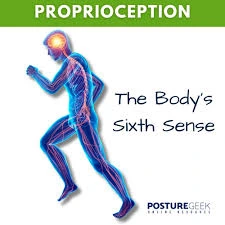
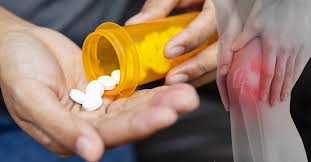
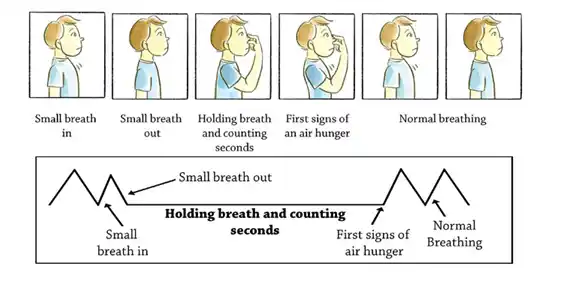
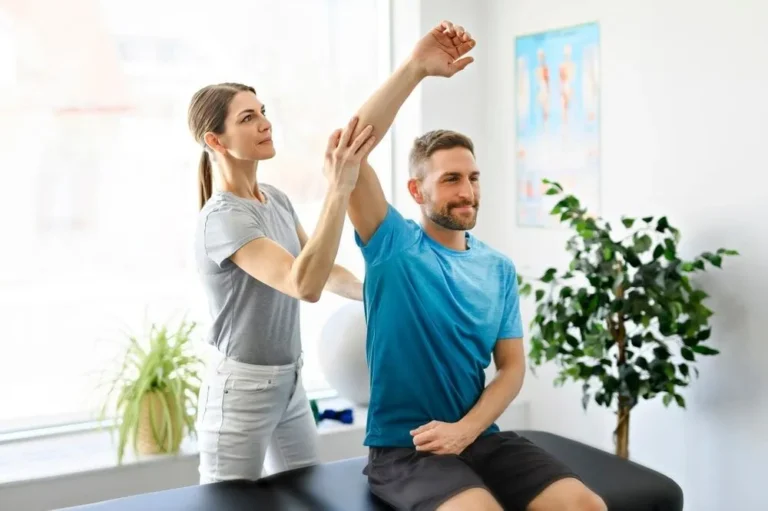
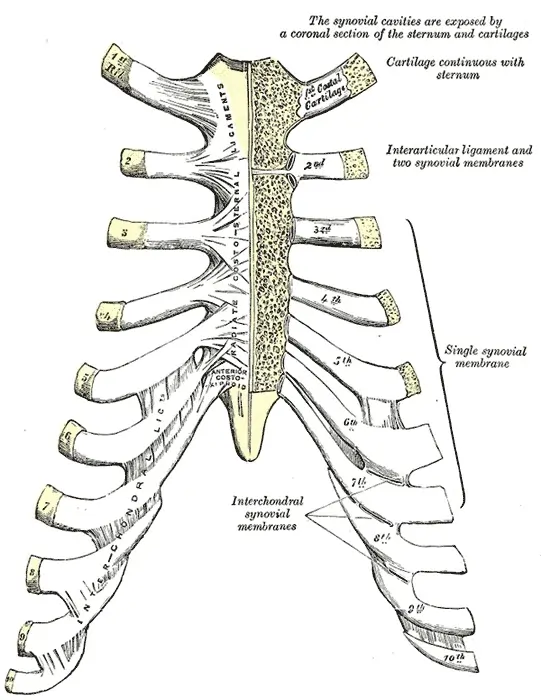
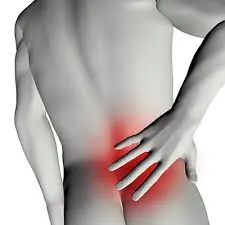
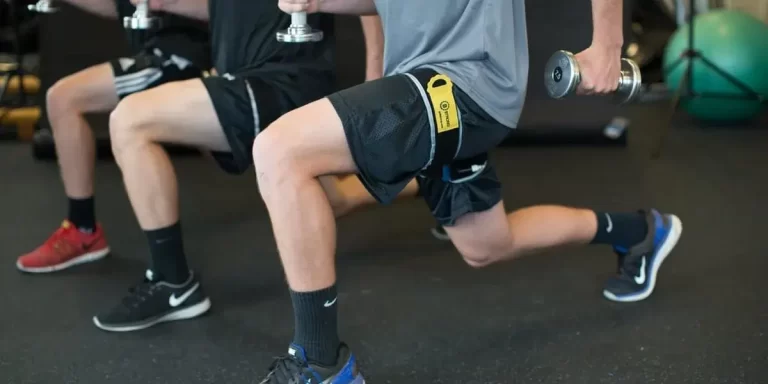
One Comment